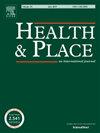Expiration of a state level eviction moratorium in the first or second trimester of pregnancy and perinatal outcomes among Medicaid and uninsured people, 2020–2022
IF 4.1
2区 医学
Q1 PUBLIC, ENVIRONMENTAL & OCCUPATIONAL HEALTH
引用次数: 0
Abstract
Goal
Housing insecurity is associated with poor perinatal outcomes. However, we lack information on whether supportive housing policies improve perinatal health. Our goal was to estimate the effect of expiration of a state-level eviction moratoria on adverse maternal and infant outcomes among Medicaid insured individuals residing in states with a state-level moratorium in place at conception in the United States.
Methods
We used data from the US natality files, 2020–2022 and the Eviction Moratoria & Housing Policy dataset to link individuals with moratoria. We compared those for whom the moratorium expired prior to conception, in the first trimester, or second trimester (exposed) with those fully protected through gestation (unexposed) We fit log binomial models to estimated risk ratios (RRs) and 95% confidence intervals (CIs) for each outcome separately (preterm birth (PTB), very preterm birth (VPTB), low birthweight birth (LBW), very low birthweight birth (VLBW), primary cesarean, maternal morbidity, or adequate/adequate plus prenatal care utilization) using generalized estimating equations, controlling for month/year of conception, state (unemployment, monthly covid death rates per 100,000, median household income, governor's party affiliation 2019), and individual (primiparity, age, race/ethnicity) confounders. We also fit difference in difference models as an alternate approach.
Results
We included 2,562,067 births (PTB: 12.5%, LBW: 8.1%, primary cesarean:14.1%). All adverse outcomes were more common for births where the moratoria expired prior to conception or during the first trimester. Following adjustment, risk remained significantly elevated for primary cesarean (preconception v. fully protected: RR: 1.08, 95% CI: 1.02, 1.14; first trimester: 1.05, 95% CI: 0.99, 1.11) but not other outcomes. Results from difference in difference models were consistent with multilevel models.
Conclusions
Expiration of an eviction moratoria during the first or second trimester of pregnancy was not associated with increased risk of adverse birth outcomes, beyond ongoing state and temporal factors for people birthing in the United States during the COVID-19 global pandemic.
2020-2022年,在医疗补助和无保险人群中,怀孕前三个月或第二个月的州一级驱逐禁令到期,以及围产期结果。
目标:住房不安全与不良的围产期结局有关。然而,我们缺乏关于支持性住房政策是否能改善围产期健康的信息。我们的目标是评估居住在美国有州一级暂缓避孕政策的州的医疗补助保险个人中,州一级暂缓避孕政策到期对不良母婴结局的影响。方法:我们使用了来自美国出生档案、2020-2022年和暂缓驱逐和住房政策数据集的数据,将个人与暂缓驱逐联系起来。我们比较了那些在怀孕前、妊娠早期或妊娠中期(暴露)终止禁令的人与那些在妊娠期间完全保护的人(未暴露)。我们分别对每个结局(早产(PTB)、极早产(VPTB)、低出生体重(LBW)、极低出生体重(VLBW)、原发性剖宫产、孕产妇发病率、妊娠期妊娠和妊娠期妊娠)的估计风险比(rr)和95%置信区间(ci)拟合对数二项模型。或充分/充分加产前护理利用),使用广义估计方程,控制受孕月份/年份、州(失业率、每10万人每月covid死亡率、家庭收入中位数、州长所属政党2019)和个人(初产、年龄、种族/民族)混杂因素。我们还在差分模型中拟合差分作为一种替代方法。结果:我们纳入了2,562,067例新生儿(PTB: 12.5%, LBW: 8.1%,原发性剖宫产:14.1%)。所有不良后果在怀孕前或妊娠早期终止的分娩中更为常见。调整后,初次剖宫产的风险仍然显著升高(孕前vs完全保护:RR: 1.08, 95% CI: 1.02, 1.14;妊娠早期:1.05,95% CI: 0.99, 1.11),但其他结局没有。差异模型的差异结果与多层模型一致。结论:除了在COVID-19全球大流行期间在美国分娩的人的持续状态和时间因素外,在怀孕的前三个月或第二个三个月期间暂停驱逐的到期与不良分娩结果的风险增加无关。
本文章由计算机程序翻译,如有差异,请以英文原文为准。
求助全文
约1分钟内获得全文
求助全文
来源期刊

Health & Place
PUBLIC, ENVIRONMENTAL & OCCUPATIONAL HEALTH-
CiteScore
7.70
自引率
6.20%
发文量
176
审稿时长
29 days
期刊介绍:
he journal is an interdisciplinary journal dedicated to the study of all aspects of health and health care in which place or location matters.
 求助内容:
求助内容: 应助结果提醒方式:
应助结果提醒方式:


